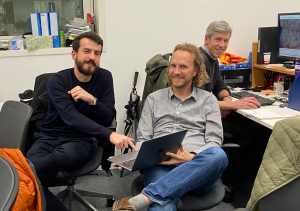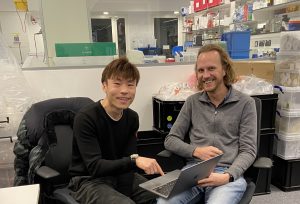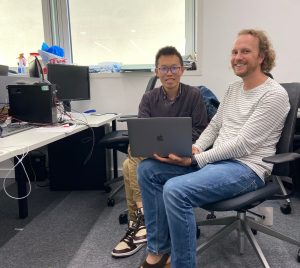Biophysics of Membrane Proteins
My primary research focuses on the biophysical mechanisms of membrane proteins, particularly channels and secondary active transporters. I especially like to use biochemical, biophysical, and structural techniques (CryoEM and X-ray) to describe the mechanism of each protein, their targeting by small molecules, and the effects of disease mutations.
Yi et al. Amino acid and viral binding by the high-affinity Cationic Amino acid Transporter 1 (CAT1) from Mus musculus (submitted)
Li et al. Structures of the human adult muscle-type nicotinic receptor in resting and densitised states. Cell Reports (2025)
Li et al. Transport and inhibition of the sphingosine-1-phosphate exporter SPNS2. Nature Communications (2025)
Pascoa et al. Structural basis of the mechanism and inhibition of a human ceramide synthase. Nature Structural and Molecular Biology (2024)
Li et al. Structure and function of the SIT1 proline transporter in complex with the COVID-19 receptor ACE2. Nature Communications (2024)
Raturi et al. High-throughput expression and purification of human solute carriers for structural and biochemical studies. Journal of Visualized Experiments (2023)
Sauer et al. Structural basis of ion – substrate coupling in the Na+-dependent dicarboxylate transporter VcINDY. Nature Communications (2022)
Brawley, Sauer, et al. Structural basis for inhibition of the drug efflux pump NorA from Staphylococcus aureus. Nature Chemical Biology (2022)
Sauer et al. Structure and inhibition mechanism of the human citrate transporter NaCT. Nature (2021)
Sauer et al. Structural basis for the reaction cycle of DASS dicarboxylate transporters. eLife (2020)
Sauer et al. Sodium and potassium competition in potassium-selective and non-selective channels. Nature Communications (2013)
Derebe, Sauer, et al. Tuning the ion selectivity of tetrameric cation channels by changing the number of ion binding sites. PNAS (2011)
Computational Biology
I also have an interest in computational biology, especially as it relates to structural biology, thermoadaptation, and reverse ecology. Of particular interest is the application of computational tools to structural biology, or aiding the interpretation of structural and biochemical results.
Sauer and Wang, Using machine learning to predict quantitative phenotypes from protein and nucleic acid sequences
Sauer and Wang, Predicting the Optimal Growth Temperatures of Prokaryotes using only Genome Derived Features. Bioinformatics (2019)
Sauer et al. Rapid Bioinformatic Identification of Thermostabilizing Mutations. Biophysical Journal (2014)




